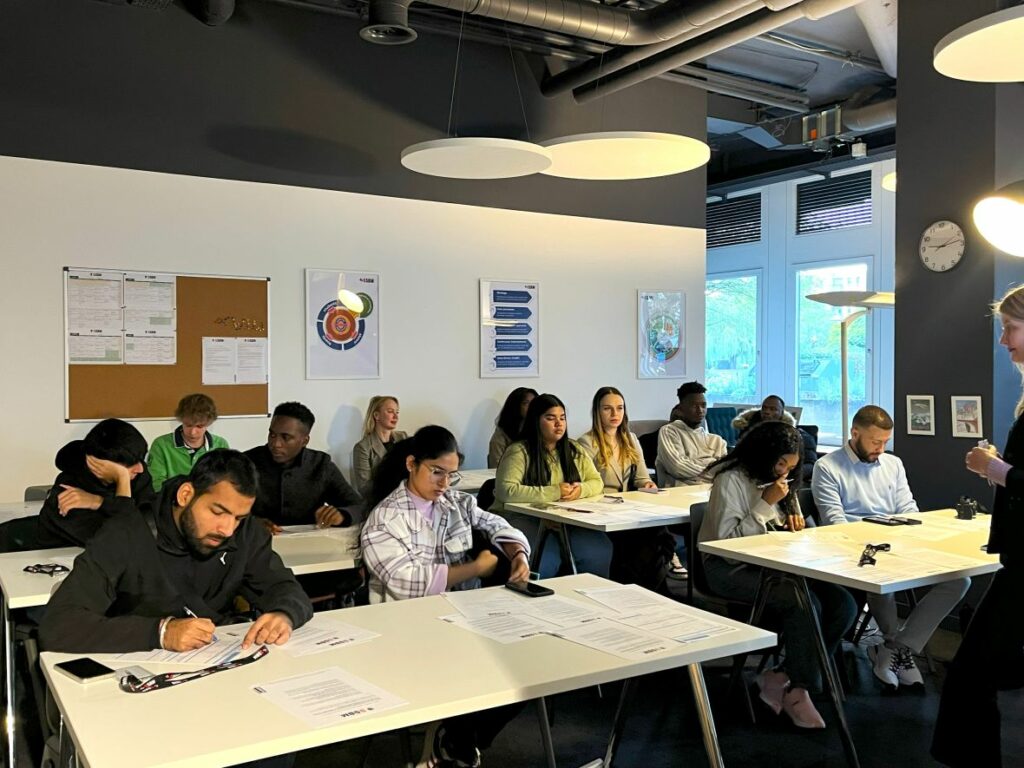Studying effectively is not just about the number of hours we spend with our books; it’s about how we use our time, strategies, and resources to maximize learning and retention. By applying the right study techniques, we can absorb information faster, retain it longer, and perform better in exams and real-world applications. Below, we explore the top 10 study methods proven to enhance learning outcomes.

Top 10 Best Study Methods
1. Active Recall – Unlocking Memory Power
Active recall is one of the most powerful study techniques. Instead of passively reading notes, we actively test ourselves by recalling information without looking at the material.
- Create flashcards or use apps like Anki and Quizlet.
- After reading a chapter, close the book and write down everything remembered.
- Practice with frequent self-quizzes.
This process strengthens neural connections, making it easier to retrieve information during exams.
2. Spaced Repetition – Beat Forgetting
Our brains naturally forget information over time, but spaced repetition helps counter this. This method involves reviewing material at increasing intervals, after one day, three days, a week, and so on.
- Schedule short review sessions instead of cramming.
- Combine with flashcard systems that automatically adjust frequency.
- Focus on weaker areas by revisiting them more often.
Research shows spaced repetition significantly improves long-term retention compared to last-minute studying.
3. The Pomodoro Technique – Mastering Time Management
Many students struggle with distractions and fatigue. The Pomodoro technique breaks study sessions into 25-minute intervals of focused work, followed by 5-minute breaks.
- After four Pomodoros, take a longer 15–30-minute break.
- Use timers or apps to stay accountable.
- During breaks, stretch, hydrate, or take a short walk.
This method helps maintain focus, reduces burnout, and makes long study sessions more manageable.
4. Mind Mapping – Visualize Knowledge
When dealing with complex subjects, mind maps allow us to organize ideas visually.
- Start with a central topic and branch out with related subtopics.
- Use colors, symbols, and images to make it memorable.
- Connect concepts to see relationships and patterns.
Mind mapping enhances comprehension by stimulating both the analytical and creative sides of the brain.
5. SQ3R Reading Method – Strategic Reading
For heavy reading materials, the SQ3R method (Survey, Question, Read, Recite, Review) is highly effective.
- Survey the material for key points.
- Question what you want to learn.
- Read actively with purpose.
- Recite key ideas from memory.
- Review regularly for reinforcement.
This structured approach turns passive reading into an active learning experience.
6. Interleaved Practice – Mix Subjects for Deeper Learning
Instead of focusing on one topic for hours, interleaving involves switching between subjects or problem types during study sessions.
- Mix math problems with history flashcards.
- Alternate between writing and problem-solving.
- Apply knowledge in different contexts.
Studies show interleaving boosts problem-solving skills and prevents the brain from getting stuck in repetitive patterns.
7. Feynman Technique – Teach to Learn
The Feynman Technique simplifies complex topics by breaking them down into plain language.
- Choose a topic and write an explanation as if teaching it to a beginner.
- Identify gaps in understanding.
- Simplify further until it’s crystal clear.
Teaching forces us to process information deeply, ensuring full comprehension and mastery.
8. Note-Taking Systems – Organized Learning
Not all note-taking is equal. Structured systems like Cornell Notes or the Outline Method help retain and organize information effectively.
- Cornell Notes: Divide the page into cues, notes, and summary sections.
- Outline Method: Use hierarchical bullet points for clarity.
- Digital Tools: Use apps like Notion, Evernote, or OneNote for organized study notes.
Good note-taking reduces revision time and creates a personalized study resource.
9. Retrieval Practice with Past Papers
Practicing with past exams and quizzes is one of the most practical methods to prepare.
- Familiarize yourself with the exam format and question style.
- Practice under timed conditions.
- Review mistakes carefully to avoid repeating them.
This form of retrieval practice not only builds confidence but also reduces exam anxiety.
10. Healthy Study Habits – Mind and Body Connection
No study method works without a healthy lifestyle to support it. Academic performance is directly linked to how we care for our bodies.
- Sleep: Aim for 7–9 hours per night to consolidate memory.
- Nutrition: Eat brain-boosting foods like nuts, fish, and leafy greens.
- Exercise: Regular movement improves focus and reduces stress.
- Hydration: Even mild dehydration can reduce concentration.
By prioritizing health, we create the foundation for sustained academic success.
Final Thoughts – Top 10 Best Study Methods for Academic Success
Effective studying is not about working harder but about working smarter. By integrating methods like active recall, spaced repetition, and the Feynman Technique with structured habits such as the Pomodoro method and SQ3R, we can transform our learning experience. Whether preparing for an exam, a professional certification, or personal growth, these techniques empower us to retain information, apply knowledge, and excel academically.

